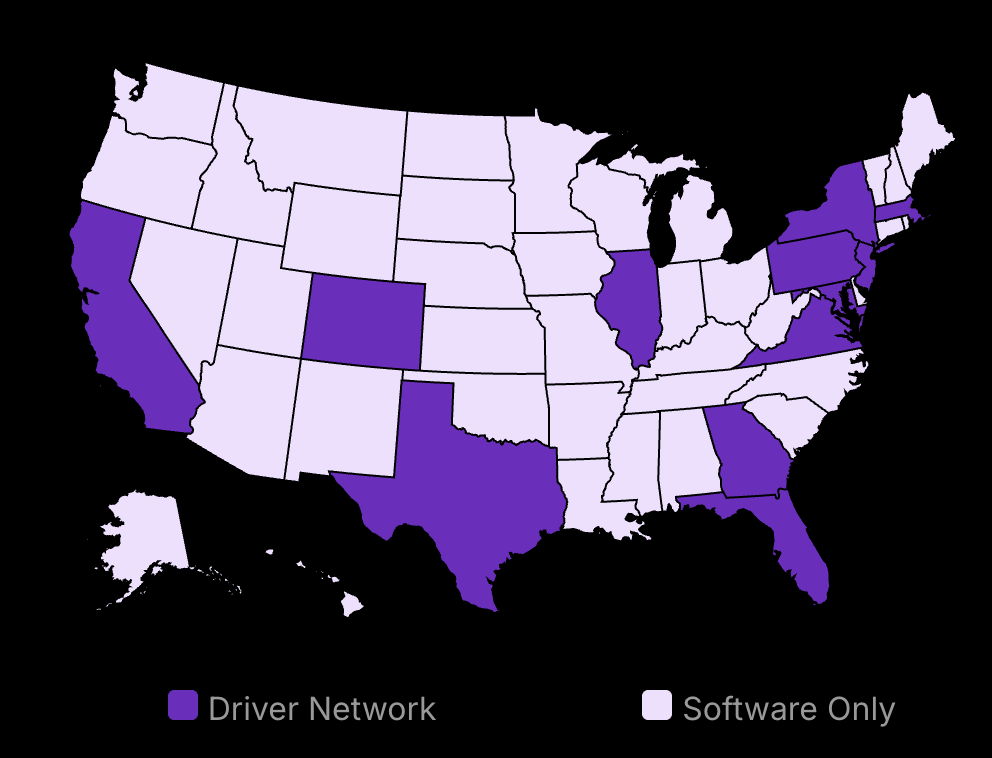Price is power. It shapes how customers view your business, impacts your profit, and determines if you stay ahead or fall behind competitors. But here’s what most business owners don’t know: pricing isn’t just about numbers – it’s about psychology, timing, and strategy, especially when it comes to a competitive pricing strategy.
But competitive pricing isn’t about being the cheapest. It’s about being the smartest. This guide shows you exactly how to set prices that attract customers and maintain profits. We’ll look at real data, proven methods, and practical steps you can start using today, including methods like penetration pricing to attract customers or premium pricing for higher-end products or service offerings.
Whether you run a small shop or lead a large company, these strategies will help you price your product prices effectively and decide when to lower prices or go for higher prices depending on your market needs. No complex theories. No outdated advice. Just clear, tested methods that work in today’s market.
Ready to master competitive pricing? Let’s start with the foundations of competition-based pricing to make sure your prices are competitive in the marketplace.

Lower your delivery costs by 23%
How we reduce costs:
- No delivery vehicle expenses
- Optimized local routes
- Pay-per-delivery model
- Average 23% delivery cost reduction
Introduction to Competitive Pricing Strategies
Understand how pricing impacts market position
Learn core elements and their function
Explore market conditions and flexibility
Understanding Competitive Pricing
A competitive pricing strategy is when a business sets its product prices based on what competitors’ pricing strategies are doing. It’s crucial because it helps companies stay attractive to customers without sacrificing too much profit. In a competitive market, being competitively priced can make or break a sale.
For example, think about the smartphone market, where brands like Samsung and Apple constantly adjust prices. Consumers often choose based on the best deal they can find at the time. This approach isn’t just about lowering prices but pricing strategically to capture market attention and boost profits.
However, being overly aggressive can trigger price wars. Competing solely on price may erode profit margins over time. Instead, businesses must find the balance between a competition-based pricing strategy and maintaining profitability. A strong value proposition is essential for any pricing strategy, as it helps clarify why your customers should choose your product over competitors. By defining, building, and leveraging your unique value proposition, you can enhance your brand’s appeal and justify your pricing decisions. For a deeper understanding of developing a compelling value proposition, check out this post on defining and leveraging your Value Proposition.
To successfully implement a pricing strategy that resonates with your target market, it’s vital to continually assess and adapt your value proposition. This adaptability enables businesses to communicate effectively with customers, aligning product offerings with market needs. For an insightful review of this approach, consider exploring how a well-defined value proposition can significantly impact your pricing strategies and overall market position. The potential for growth and enhanced customer loyalty becomes evident with a strategic focus on what makes your offerings unique. Discover more by checking out this post about crafting a compelling value proposition.
Key Elements of Competitive Pricing
Competitive pricing includes several key elements, such as cost, consumer demands, and competitor strategies. Let’s break these down:
Core Components
Cost Structure: Knowing your cost base allows you to set prices that cover expenses and ensure profitability.
Consumer Behavior: Understanding customer needs and price sensitivity helps set attractive prices.
Competitor Pricing: Regularly monitoring competitors keeps your prices attractive.
Companies must watch market trends, such as those highlighted during the COVID-19 pandemic, where PPE demand led to price surges due to limited supply. Making real-time pricing adjustments can be beneficial, as seen with companies like Amazon and Walmart, which use competitive intelligence to stay competitive.
Flexibility and Market Conditions
Flexibility is key in responding to fluctuating market conditions. For instance, the airline industry often changes prices due to variables like fuel costs and travel demand. A flexible strategy allows businesses to react swiftly to economic changes like inflation or economic downturns that affect consumer spending habits.
Misunderstandings about competitive pricing include the belief that lowering prices is always the answer. In practice, lower profits from underpricing can undervalue your brand image, leading to long-term damage. Thus, smart pricing not only considers the competition but also the broader market analysis and business goals.
Understanding and applying the right competition-based pricing strategy will equip businesses to effectively position themselves in any competitive market, ensuring sustainability and success. A key aspect of maintaining a competitive edge is effective product differentiation. By clearly defining what makes your product unique compared to others in the market, you not only justify your pricing strategy but also attract a dedicated customer base. For an in-depth look at how to achieve this, check out our post on enhancing your market presence through effective product differentiation.
In highly competitive markets, distinguishing your product through clear and compelling product differentiation is vital. It strengthens your pricing strategy by emphasizing the unique attributes and benefits your product offers that competitors cannot easily replicate. This not only supports premium pricing but also fosters customer loyalty by creating a strong brand identity. Businesses that invest in articulating their unique value propositions through product differentiation often see increased customer engagement and reduced price sensitivity. To explore strategies for making your product stand out and the impact this has on effective pricing, consider reading our detailed guide on enhancing market presence through product differentiation.
Business Profitability Enhancements: Companies utilizing dynamic pricing can see profit increases ranging from 2% to 7% compared to those employing static pricing models.
Step-by-Step Guide for Implementing Price Optimization Techniques
Understand competitors and market trends thoroughly.
Set clear pricing goals for a successful strategy.
Continuously monitor and adjust prices based on performance.
Step 1: Conduct Market Research
Start by diving deep into competitor research. The first task is to study your competitors’ pricing. This means keeping an eye on their competitor’s pricing strategies and any changes they make. Tools like price tracking software or manual tracking methods are used to collect this pricing data. Next, look at market analysis and customer demands. Understand what consumers are currently purchasing and why. Gather insights through surveys, customer feedback, and sales data. This will highlight patterns and shifts in consumer preferences that can influence your pricing strategy.
Step 2: Assess Your Costs
Next, delve into your cost structure. Calculate direct costs, which include manufacturing, labor, and materials directly tied to product creation. Don’t forget indirect costs like marketing and overhead expenses. This comprehensive assessment will provide a baseline for determining the lowest prices you can offer while making a profit. This step will prevent unexpected financial shortfalls. Make a spreadsheet detailing these costs to ensure nothing is overlooked. Review this data regularly, as cost factors can change over time.
Step 3: Define Your Pricing Objectives
Clearly defining your pricing objectives is crucial. Start by identifying whether your goal is to penetrate the market or to maximize profit. If you aim for market penetration, consider lower price points to attract a broader customer base. For those focused on profit maximization, higher prices could be justified by premium product features or brand positioning. Your pricing objectives should align with your business strategy. Ensure you have buy-in from key stakeholders by discussing and confirming these goals in strategy meetings.
Step 4: Choose Price Optimization Techniques
Choose an appropriate price optimization technique that suits your business model. Consider dynamic pricing, which adjusts prices based on real-time demand and supply conditions. Tiered pricing, where different customer segments are charged different prices, can also be effective. Some businesses benefit from a competitor-based pricing strategy, while others might find a value-based pricing model more suitable. Given the advancements in technology, AI-driven pricing platforms now enable real-time updates and decisions, reducing manual effort and errors. Align your choice with your previously defined objectives to ensure consistency and coherence.
General Profit Increases: A study by Deloitte found that 80% of companies implementing dynamic pricing reported significant profit increases within the first year of adoption.
Step 5: Monitor and Adjust Prices
Finally, keep a close watch on how your pricing performs. Track sales data, customer responses, and overall market feedback. Use analytics tools to gather insightful data regularly. This monitoring allows you to make necessary adjustments without delay. Consider if your current prices evoke the desired customer response, and adjust accordingly. This continuous evaluation is key to maintaining a competitive edge in the market. Being agile and responsive ensures your pricing remains optimal over time.
By following these steps, you lay the groundwork for a robust price optimization strategy that can adapt to market changes and align with your business goals, setting the stage for exploring further strategies in market-based pricing.
Maximizing Profit with Market-Based Pricing Strategies
Get ahead by knowing competitors’ pricing moves.
Align your pricing with your brand’s position for consistency.
Learn how to fine-tune your approach for bigger profits.
Step 1: Analyze Competitor Pricing
Understanding your competitor’s pricing strategies is crucial. Keeping tabs on their pricing helps you react quickly to market changes. Start by routinely reviewing their pricing patterns. You’ll want to look at historical data about their pricing fluctuations. This is beyond just listing prices; think about discounts, special offers, and how frequently they adjust prices. Use tools like Price2Spy or Prisync. They automate this tracking and analysis process. These tools save time and mitigate the risk of making error-prone, manual comparisons.
Investing time in understanding your competitors’ strategies offers a competitive edge. But there are hurdles. For instance, too much focus on competitors can blur your unique value proposition. To avoid this, use insights gleaned to enhance your strategy. Think of adjusting your value offerings, not just matching prices. Also, consider how external factors like economic shifts influence your competitors’ pricing. To delve deeper, “Competition Demystified” by Bruce Greenwald is an excellent resource. It explores competitive dynamics beyond pricing.
Step 2: Align With Market Positioning
Your pricing strategy reflects your brand’s positioning in the market. First, clarify where your brand stands: Are you a premium offering or a cost-effective solution? This alignment determines both the effectiveness of your pricing and how the market perceives you. For a high-end brand, underpricing can dilute perceived value. Conversely, premium pricing might alienate cost-sensitive customers.
Consistency is key. If your advertising paints a luxury image, the prices should match this promise. A mismatch can confuse and dampen trust. Ensure that the perceived value aligns with the market’s expectations. Look into frameworks like Michael Porter’s Competitive Strategy for ways to position your brand sustainably in the market. It offers insights on how to balance being distinctive yet competitive. Always refer to how pricing aids in communicating brand image and how this communication should remain steady across all platforms.
Step 3: Implement Tiered Pricing
Tiered pricing lets you capture various market segments. It works best when your products or services naturally have different levels of features or benefits. Start by delineating clear categories. Each should target specific customer needs. For instance, a software company might offer ‘Basic,’ ‘Professional,’ and ‘Enterprise’ versions. This approach maximizes revenue by catering to different willingness to pay within your customer base.
Design these tiers thoughtfully. They should progress logically, offering clear reasons for customers to upgrade. But beware – too many options can overwhelm buyers. Stick with three to four tiers, providing distinct differences in value for each. It allows alternatives to a one-size-fits-all pricing model and encourages customer self-segmentation. Books like “Monetizing Innovation” by Madhavan Ramanujam offer deeper insights into executing such strategies with precision and understanding customer eagerness to pay.
Step 4: Adapt Pricing to Market Changes
Adapting quickly to market changes boosts profitability. Constant recalibration is key. Use real-time market data to ensure that you’re not left behind. Consider elements like demand shifts, cost changes, and new market entrants. Platforms like DynamicAction can provide integrated data insights that facilitate rapid decision-making.
Real-Time Operations: A study from MIT's Center for Information Systems Research revealed that companies operating with a focus on "real-time-ness" achieved more than 62% higher revenue growth and 97% higher profit margins compared to their slower counterparts.
However, the other side of adaptability is chaotic price changes, which can lead to customer dissatisfaction. Clearly communicate the reasons behind any changes. Open dialogue maintains trust and mitigates backlash. For further reading, the book “Blue Ocean Strategy” by W. Chan Kim and Renee Mauborgne discusses strategic pricing moves that let companies create new market spaces, avoiding fierce competition.
Step 5: Evaluate Outcomes and Conduct Regular Reviews
Evaluating your pricing strategy isn’t a one-time endeavor. Regular reviews are essential. Schedule frequent audits of your pricing performance against set objectives and market conditions. Metrics to assess include sales volume, market share, and the impact of pricing changes on profitability. For a structured approach, consider using SWOT analysis to critically evaluate your pricing tactics.
Document lessons learned and strategies that worked well. Use these inputs to fine-tune future strategies. This process aids in evolving your pricing strategy to remain competitive. To further explore this continuous improvement approach, the book “Measure What Matters” by John Doerr offers insights into using objectives and key results to drive performance enhancements.
Utilizing Psychological Pricing Models to Boost Sales
Emotions and perceptions hold more sway than logic in how consumers view prices.
Methods like charm pricing can trigger boosted sales by appearing to offer better deals.
Adapting to how people think can set your pricing game apart from just numbers.
Statistical Analysis of Pricing Strategies
Charm Pricing Technique: This technique, where prices end in .99 (e.g., $9.99 instead of $10), has been shown to increase sales by 24%.
General Sales Boost: A university study conducted in 2021 found that psychological pricing strategies, including charm pricing, led to an impressive 60% increase in retail sales.
Odd Pricing: Pricing items to end with odd numbers (e.g., $5.97) rather than even numbers has also shown effectiveness. Nearly 90% of retail item prices end in a 5 or 9, reflecting a strong preference among consumers for these price endings.
Step 1: Understand Consumer Psychology
Understanding the psychology behind consumer behavior is key. Price perception can significantly affect buying decisions. Factors such as emotions, perceptions, and social norms often take precedence over rational analysis. For instance, the concept of anchoring, where initial price information influences subsequent judgments, plays a big role. Reading how anchors work in different contexts can deepen your grasp. Books like “Thinking, Fast and Slow” by Daniel Kahneman provide detailed insights into cognitive biases like these. Another important concept is reference pricing, where consumers compare a price with a mental benchmark or competitor’s price. Knowing these theories thoroughly can allow you to tailor your pricing to tap into these subconscious triggers.
Step 2: Implement Common Psychological Pricing Techniques
One widely used technique in psychological pricing is charm pricing. This method involves setting prices that end in ‘9’ or ’99,’ like pricing an item at $9.99 instead of $10. It’s a simple but effective way to make prices seem lower and more appealing. Extensive research shows it can increase sales by up to 24%. This technique works because consumers tend to perceive these prices as much lower due to left-digit bias, where the first number in a price impacts perception more than subsequent digits.
Additionally, bundling can enhance perceived value. Offering multiple products for a single price results in consumers viewing the bundle as more economical than purchasing each item separately. Another approach is decoy pricing, where you introduce a third middling option to make another, higher-priced option seem more attractive.
Step 3: Monitor Psychological Pricing Effectiveness
Assessing how well psychological pricing works is crucial. It’s not just about setting the prices but also evaluating their impact over time on sales and customer behavior. Using data analytics to track the performance of pricing strategies can yield insights into what works and what does not. While no single approach is foolproof, adapting based on evidence is the best path forward.
Customer Satisfaction Improvement: The same KX report noted that 98% of companies reported increased positive customer sentiment after adopting real-time data systems.
DealHub suggests that effective psychological pricing can reduce inventory costs and speed up decision-making, leading to high returns. This underscores the need to experiment and adapt these strategies, monitoring KPIs like conversion rates and customer satisfaction. Integrating analytics tools into your pricing strategy helps you visualize these impacts and refine the techniques for better results.
Reference materials like “The Strategy and Tactics of Pricing” by Thomas T. Nagle offer advanced methods to evaluate pricing effectiveness with real-world case studies. Reading such works can help you further master this critical element of pricing.
The next logical step involves utilizing the gathered data to refine these strategies, integrating real-time analytics and predictive modeling.
Advanced Tips for Data-Driven Pricing Decisions
Use real-time data for accurate pricing.
Predictive models can forecast pricing trends.
Avoid common mistakes to protect profit margins.
Leveraging Data Analytics
Integrating data analytics into your pricing strategy isn’t just helpful; it’s essential. In a world where faster decisions can lead to better outcomes, using data analytics tools gives you the edge. Real-time pricing insights help businesses adapt quickly to market changes. For instance, artificial intelligence can enhance service experience, including pricing. And companies that leverage data are 23 times more likely to gain new customers. By analyzing competition pricing and other businesses, companies can fine-tune their pricing approach to remain competitive in the entire market.
Customer Preference: 73% of shoppers believe that AI could improve their customer experience according to Tidio.
Expert Opinion: Salesforce found that 63% of service professionals think generative AI will help them serve customers faster.
Predictive models are another powerful tool. They give you an idea of future pricing trends by analyzing current and historical data. These models consider factors like past sales, market trends, and customer behavior. You can create pricing strategies that are not only relevant for today but also anticipate future changes. Price skimming and loss leader pricing strategies can be used to attract different customer segments or clear inventory, respectively. Books like “Data Science for Business” by Foster Provost and Tom Fawcett can give you a practical understanding of how to use data in business effectively.
Common Pitfalls and How to Avoid Them
It’s tempting to rely on historical data for pricing decisions. But over-reliance on past data can mislead you. Markets evolve, and what worked yesterday may not work tomorrow. Instead, combine historical data with real-time analytics. Real-time data processing allows you to respond to market trends promptly. Be cautious of engaging in race-to-the-bottom pricing strategies, as they can lead to reduced margins. Lower prices can boost volume, but they might not always mean higher profits in the long run. For a balanced view, “Thinking, Fast and Slow” by Daniel Kahneman is a great read. It helps understand decision-making biases that can affect pricing strategies, including how customer perception of pricing can impact sales.
Another common issue is not considering the broader market environment. A data point like an increase in competitor prices should trigger a reevaluation of your pricing strategies, but it doesn’t mean you should follow suit blindly. Use data as a guide, but always consider external factors and internal objectives when making decisions. For brand-new businesses, having a well-considered pricing strategy, rather than blindly matching competition pricing, can build a loyal customer base while managing fixed costs effectively.
Dynamic Pricing Strategies
Dynamic pricing is a living approach where prices can change based on demand, competition, and other factors. With AI-powered tools, businesses can adjust prices in real time. This flexibility ensures competitiveness in a fluctuating market. The key here is balance. While making frequent price changes can optimize profits, it can also confuse or alienate customers. Thus, transparency and communication are crucial to maintaining trust. By leveraging data, businesses can avoid priced lower than necessary, offering competitive prices without compromising on profitability.
Revenue Growth: Retail companies that utilize dynamic pricing have experienced revenue growth of up to 25%, particularly during peak seasons like holidays.
Big data plays a pivotal role in dynamic pricing. It provides insights from vast amounts of sales data, market trends, and customer behaviors. Leveraging big data can optimize pricing strategies, allowing companies to adjust prices in real time while considering factors like customer demand and competition pricing. For example, Flintfox’s pricing engine uses big data analytics to refine pricing strategies effectively.
Real-Time Analytic Impact: According to a report by KX and the Centre for Economics and Business Research, 80% of companies that implemented real-time analytics reported increased revenues, with a total potential revenue uplift of $2.6 trillion across various industries and regions surveyed.
Further Resources and Reading
Learn how behavioral economics influences pricing strategies.
Understand competitive pricing’s role in expanding market share.
Access deeper learning through books, studies, and materials.
Related Topics or Advanced Guides
Resources on behavioral economics can deepen your understanding of how psychological principles apply to pricing. Behavioral economics looks at why people, including businesses, make irrational financial decisions. For instance, managers might lower prices impulsively to gain immediate sales, without considering long-term profitability. This approach is tackled in the behavioral model that outlines how firms tend to reduce prices when faced with potential losses, which leads to risk-seeking behaviors. It can be valuable to study these biases to avoid common pitfalls in pricing strategy.
Case studies on successful pricing strategies provide practical insights into effective price setting. Companies like Amazon and Walmart have mastered competition-based pricing by continuously monitoring competitor data and adjusting prices dynamically. These large retailers often make real-time pricing decisions using technology to stay ahead, keeping market share under tight control. Delving into these case studies will demonstrate how to use similar tactics effectively on a smaller scale.
Why Competitive Pricing Matters
Competitive pricing directly influences market share and business growth, offering a way to expand reach while maintaining or improving profit margins. The strategy allows businesses to attract a broader consumer base by offering prices aligned with or lower than competitors. A recent article from Faster Capital underscores how market share expansion hinges on the ability to set competitive prices. Penetration pricing, which adopts low upfront costs to win more customers over quickly, can fuel growth but requires careful implementation to avoid eroding brand value.
Enhanced Profit Margins: Companies adopting dynamic pricing strategies have seen profit margins increase by as much as 10%, further solidifying the financial advantages of this approach
Placing competitive pricing within the larger context of economics reveals its strategic importance. Pricing is not just about covering costs or outdoing rivals; it’s about gaining a strategic foothold in the market landscape. Businesses that master this balance often use a mix of price transparency and value-based positioning to communicate their market edge. Ron Johnson aptly states that great pricing is about figuring out how much your customers value your product, which gives insight into aligning pricing with perceived value.
Additional Learning Materials
To further your expertise in competitive pricing, numerous books and podcasts are at your disposal. “The Price Advantage” by Walter L. Baker, Michael V. Marn, and Craig C. Zawada is a thorough read on pricing models and strategies. It’s appreciated for its depth in conveying pricing methods across different market scenarios. For audio learners, podcasts like “The Pricing Coach” feature discussions on real-world pricing challenges and developments. They provide actionable insights from experienced practitioners.
The landscape of pricing strategies is also well-covered through online courses. Platforms like Coursera and LinkedIn Learning offer courses with modules that cater to both beginners and seasoned professionals in the field. Industry reports and whitepapers present valuable data and trends to enrich your pricing acumen. These documents often offer yearly analyses, like those from consulting firms, revealing shifts that require strategic adaptation in pricing methods.
Gaining advanced knowledge of competitive pricing involves continuously evolving your skills and strategies. Utilize these resources to build a deeper understanding, enabling informed decisions that align with business objectives and customer expectations.
Conclusion
Smart pricing helps businesses stay ahead and gain market share. We looked at market research, cost analysis, and data-driven methods to set prices that work. The key is to balance profits with customer value while considering market demand and the prevailing market price. A successful competitive pricing strategy enables businesses to remain competitive within the competitive landscape.
Setting prices is both science and skill. You need good data about your target market and costs. However, you also need to think about how customers perceive your prices concerning the same price range offered by competitors. Small changes, like using $9.99 instead of $10, can make a big difference in sales.
Keep these points in mind: Watch your competitors but don’t copy them blindly. Test different prices and learn from the results to stay in line with market demand. Use data to make choices, not guesses. Most importantly, remember that good pricing builds trust with customers and aligns with a successful competitive pricing strategy.
The market keeps changing. Your prices should too. Make it a habit to check your pricing every quarter, considering market demand, prevailing market price, and what competitors are doing. Then adjust as needed to stay competitive.
You now have the tools to make smart pricing choices that help gain market share. The next step is to pick one method from this guide and try it. Start small, measure the results, and build from there. Your business success depends on getting pricing right and understanding the competitive landscape.


























